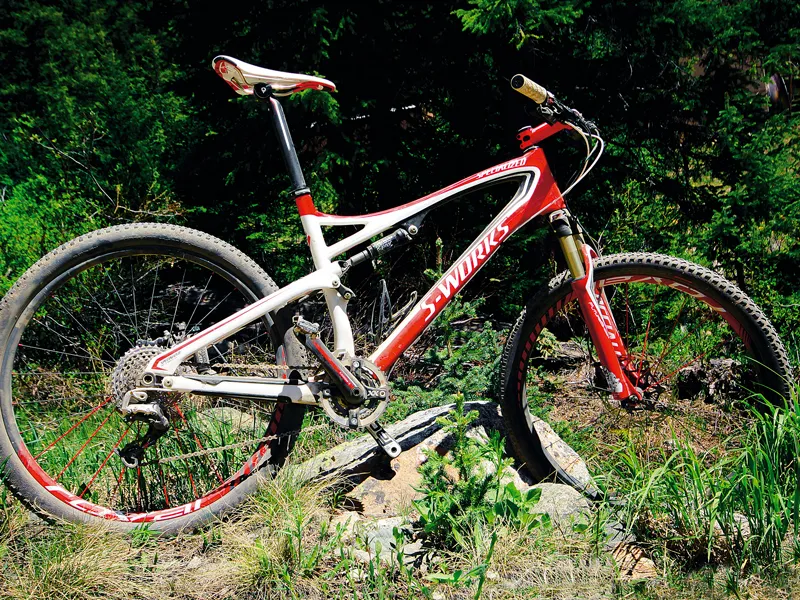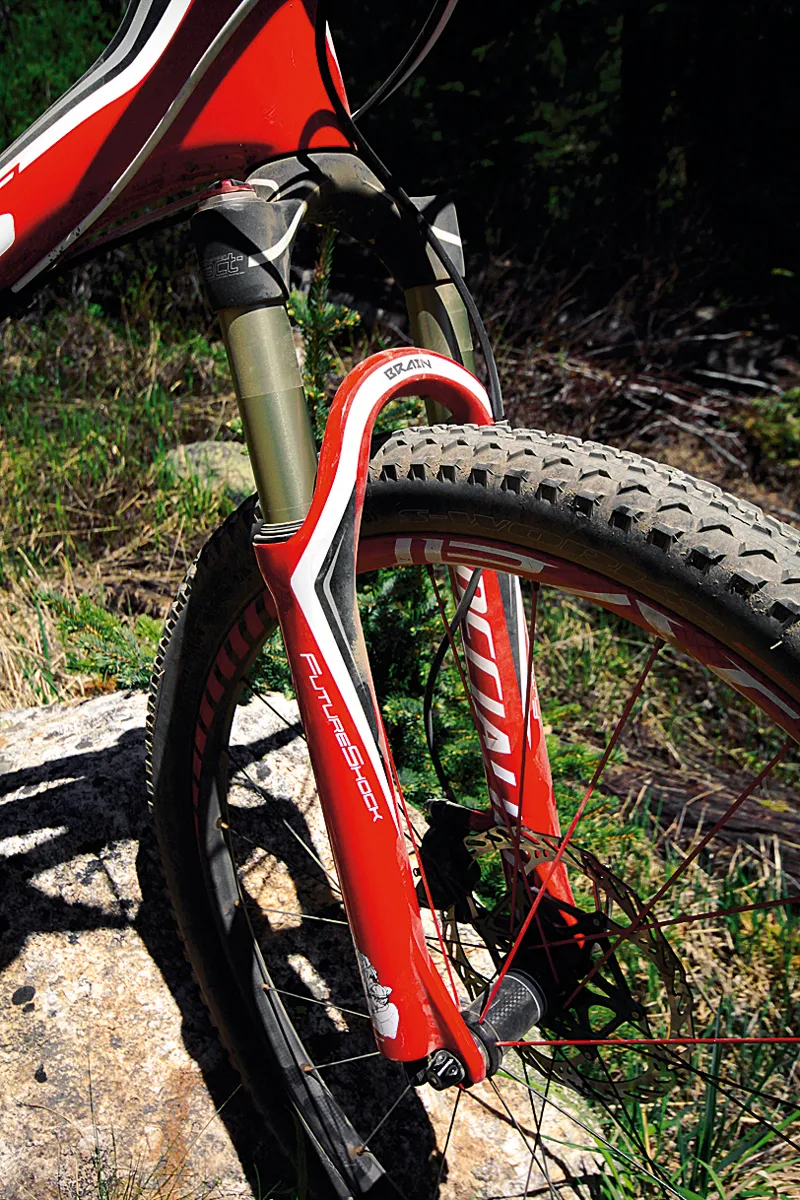Despite the current Specialized Epic having debuted just a couple of years ago, there’s now an all-new model for 2011. That’s a pretty quick design turnover, but there’s a good reason for it – Specialized wanted to tackle the high-end 29er full-suspension market, which meant doing an Epic 29er in carbon. At that point, redesigning the 26in bike was an obvious next step.
The 2011 Epic is a rare example of the design of a 26in bike being driven by the needs of a 29er. Specialized’s engineers, led by mountain bike engineering manager Jan Talavasek, were aiming to overcome the fact that bigger wheels and frames are inherently more flexible – stiffness was a primary design goal. Everything that the team came up with found its way into the 26in bike too.
A bike this light will always flatter on the climbs, but it’s not just weight that helps – the sorted Brain suspension has all the traction-grabbing ability you’d expect on loose or rough ascents. The previous model delivered extra trail sensibility and the new one carries on in a similar vein. When a bike rides this well, you don’t want to stop.
Ride & handling: Out-of-the ordinary, full-paced ride
We rode the S-Works Epic on an all-day singletrack loop, taking in sections of the Colorado Trail, a 500-mile route through the Rockies. The first impression was one of speed. This is an awesomely fast bike, even when the engine is somewhat hampered by operating at 11,000ft. A lot of that is down to its feathery weight, but low mass isn’t the whole story.
Often, flea-weight bikes feel twangy and nervous, but all the work that went into making the Epic stiff has paid off – it’s not just eager under power, it’s poised in corners too. The test bike did have a secret weapon in the shape of its carbon-rimmed Roval Control SL wheels. At 1,200g a pair they’re amazingly light, but don’t feel as flimsy as you’d expect. Production Epics will come with aluminium rims that weigh a little more but still feature the stiffness-enhancing flange width tweaks.
Specialized have been pushing their Brain inertia valve shock tech for years. From an uncertain start it’s been continuously developed, and the setup on the 2011 Epic leaves little grounds for complaint. The transition between locked-out for smooth trails and open for bumps is usually scarcely detectable and the Mini Brain rear shock and E100 fork work well together. There’s also a useful range of threshold adjustment at both ends, so you can almost always have it locked-out, except for the big stuff, or a setup that’s nearly always open.
Despite the Epic’s race-oriented demeanour, Specialized have kept the handling balance conservative. Some cross-country race bikes are tricky at higher speeds or over rough ground, but the Epic is friendly. There’s no lack of agility in the twisties, but you can give it its head when things open up, and it will hold a line. On the flowing descents of the Colorado Trail it was spectacular – fluid and poised over the bumps and through corners, and like lightning out of bends and up short rises.

Frame & equipment: Brain shock concept has come of age
While the general layout of the Epic’s rear suspension is unchanged, some tweaks have been made. There’s now a seatstay bridge, with a removable shock mount at the front end of the seatstays to permit assembly. The seatstays themselves have a new hockey stick profile, with the rear end incorporating the chainstay pivot, through-axle carrier, brake mount and Brain inertia valve mount (the latter two on the non-drive side) into a light carbon fibre moulding.
The X12 142x12mm through-axle rear wheel system is found on a lot of 2011 bikes, but not many in the Epic’s category. Specialized have taken advantage of the fact that they build their own wheels to make the most of the extra width. Rather than using the extra axle length to engage in frame slots to ensure wheel alignment, they've moved the cassette 2mm outboard to accommodate wider flange spacing for a stiffer wheel.
“By moving the flanges further apart, we have over 20 percent stiffness increase just in the wheel,” Jan explains. The system is called 142 . The Epic will take any X12 wheel, but the Epic-specific Roval 142 wheels won’t fit other X12 frames. 142 is a tool-free design, and racers will be glad to hear Specialized say it’s at least as fast to change a wheel as with a conventional quick-release dropout.
Standard spec on the S-Works are Roval Control SL wheels – with 24 spokes front and rear, a DT freehub mechanism and a carbon/alloy front hub with oversized end caps – that increase stiffness when combined with the Specialized Future E100 inertia valve fork. Less expensive Epics (and the 29er models) will come with RockShox Reba forks with Brain inertia valve internals, but Specialized are sticking with their own fork on the flagship model. A bijou Mini Brain shock suspends the back end.
Up front, the main frame is all carbon fibre. The extra top tube strut on the 2010 Epic has gone (except on the L and XL sizes), to be replaced by a generous flare. The tapered head tube takes a 1.125/1.5in headset, while the bottom bracket shell is sized for the press-fit 30 system. As is traditional on a high-end Specialized, you’ll find the company’s carbon fibre crank arms on the Epic, with a spider designed to take 29/36 SRAM XX chainrings. The complete bike comes in just under 10kg (21.4lb).
Tester says...
Mike Davis: "When the first Brain-equipped Epic came out we were sceptical. It was unpredictable, didn't help much on bumpy climbs and lacked adjustability. While we're still not 100 percent sold on the concept for long-travel bikes, on the 100mm Epic it's a bona fide asset. Stir in the stiffness boost in the back end and the ultra low weight and you've got a winner, whether you're racing or not."



